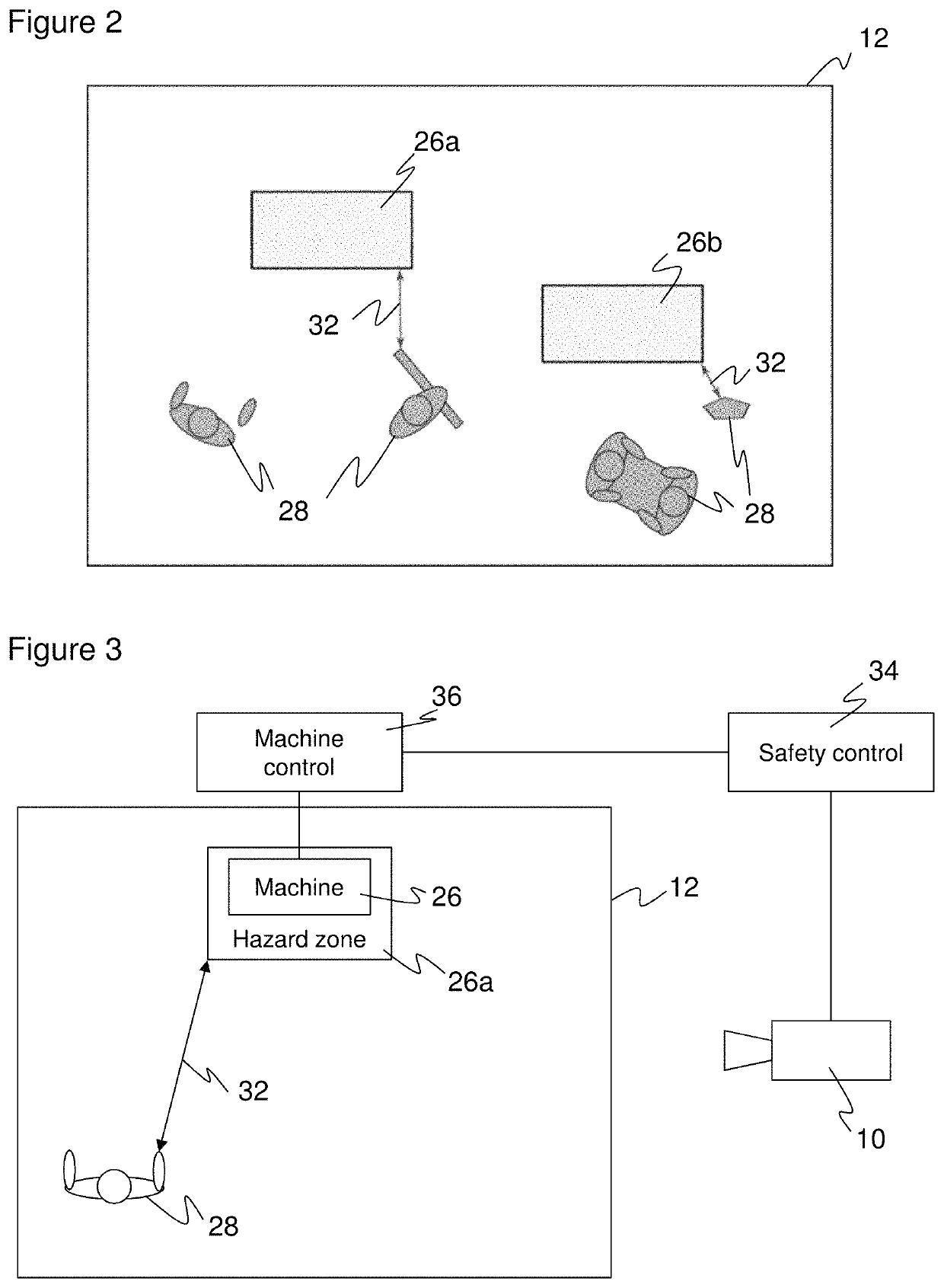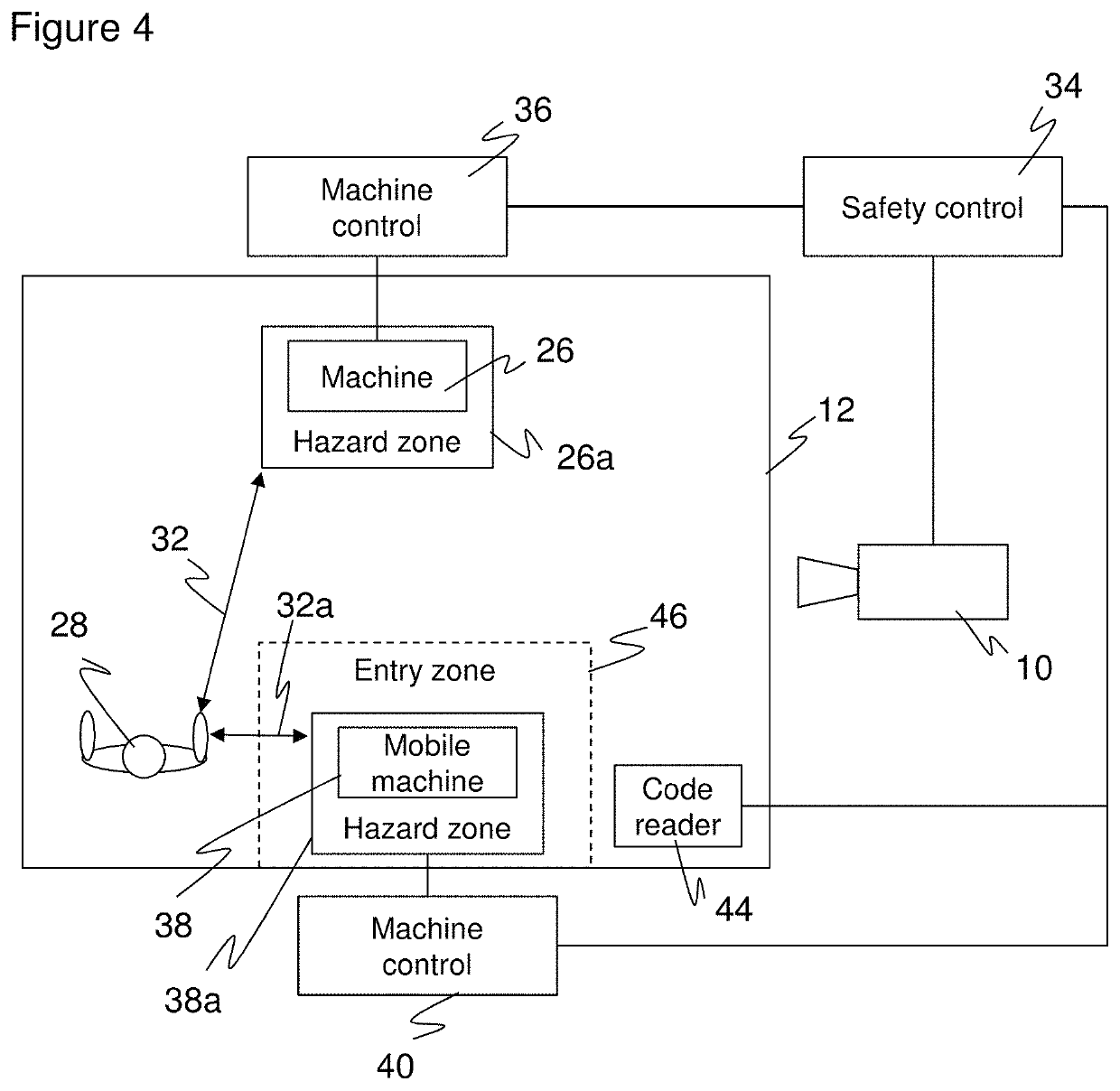Sensor arrangement and method of securing a monitored zone
a technology of sensors and monitored zones, applied in the direction of optical detection, measurement devices, electromagnetic wave reradiation, etc., can solve the problems of insufficient implementation of known securing concepts, too complex and dynamic, and in addition to protected fields, which do not permit any close cooperation with machines, etc., to achieve the effect of facilitating identification
- Summary
- Abstract
- Description
- Claims
- Application Information
AI Technical Summary
Benefits of technology
Problems solved by technology
Method used
Image
Examples
Embodiment Construction
[0045]FIG. 1 shows the general design of a stereo camera for recording a depth map in a schematic three-dimensional representation. The stereo camera is only one example for a monitoring sensor 10 with respect to which the object detection will be explained in the particularly advantageous case of a three-dimensional spatial monitoring. The other 3D cameras mentioned in the introduction would equally be conceivable and, as a further alternative, other optoelectronic sensors such as 2D cameras or laser scanners.
[0046]Two camera modules 14a, 14b are mounted at a known fixed distance from one another for the detection of a monitored zone or spatial zone 12 and each take images of the spatial zone 12. An image sensor 16a, 16b, usually a matrix-type reading chip, is provided in each camera module 14a, 14b and records a rectangular pixel image, for example a CCD or a CMOS sensor. The two image sensors 16a, 16b together form a 3D image sensor or light receiver for detecting a depth map. On...
PUM
 Login to View More
Login to View More Abstract
Description
Claims
Application Information
 Login to View More
Login to View More - R&D
- Intellectual Property
- Life Sciences
- Materials
- Tech Scout
- Unparalleled Data Quality
- Higher Quality Content
- 60% Fewer Hallucinations
Browse by: Latest US Patents, China's latest patents, Technical Efficacy Thesaurus, Application Domain, Technology Topic, Popular Technical Reports.
© 2025 PatSnap. All rights reserved.Legal|Privacy policy|Modern Slavery Act Transparency Statement|Sitemap|About US| Contact US: help@patsnap.com



